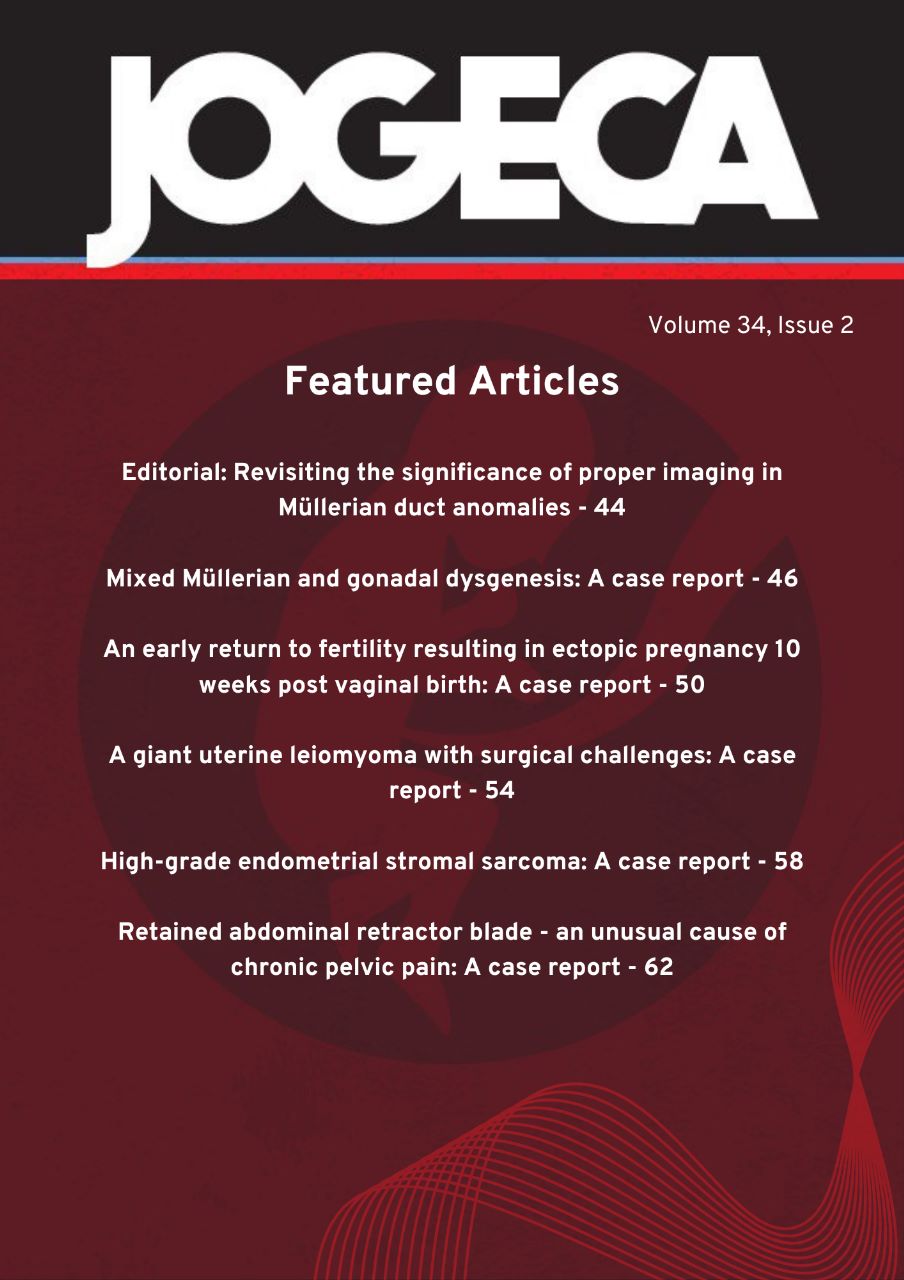Congenital neonatal hemochromatosis with recurrent neonatal deaths - a diagnostic nightmare: A case report
DOI:
https://doi.org/10.59692/jogeca.v36i1.168Abstract
Background: Neonatal hemochromatosis (NH) is a rare disorder and the most common cause of acute
liver failure in neonates. NH is characterized by severe hepatic injury and iron overload with high
perinatal mortality and morbidity. There is a high risk of recurrence in subsequent pregnancies of women
who have had a child with neonatal hemochromatosis.
Case presentation: A 40-year-old para 13 with one living child and three previous cesarian scars
presented at ten weeks with a history of recurrent neonatal deaths. Her last infant death was at four
months after she delivered a baby via cesarian birth at 36 weeks. The infant developed severe jaundice
with reduced urine output. Laboratory investigations revealed deranged liver function tests with elevated
serum ferritin levels. The infant received repeated exchange transfusions, immunoglobulin, and
dexoferamine. However, she succumbed at four months. Her management for the current pregnancy
required close follow-up and she delivered at 37 weeks gestation to a live male infant who is faring well.
Discussion: The cause of NH is not fully understood. Significant evidence indicates that most cases of
neonatal hemochromatosis result from fetal liver disease due to maternal-fetal alloimmunity, a condition
termed gestational alloimmune liver disease (GALD). In GALD, these antibodies bind to fetal liver
antigen and activate the terminal complement cascade, resulting in hepatocyte injury and death.
Conclusion: NH is the most common cause of neonatal acute liver injury and should be considered in all
cases of severe fetal liver injury as well as in cases of stillbirth, fetal demise, and early postnatal death.
Downloads
Published
How to Cite
Issue
Section
Categories
License
Copyright (c) 2024 The Authors.

This work is licensed under a Creative Commons Attribution 4.0 International License.




